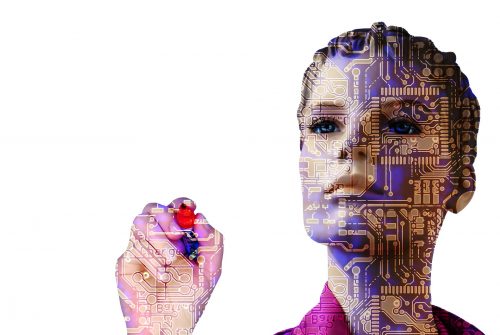Post Covid-19 work and its challenges
3 June 2020 | Written by Vito Verrastro
Technology "augmented" jobs and risky profiles

In less than two months, the pandemic emergency from Covid-19 created the largest collective shift in the world in social activity, due to the lockdown, and in working practices (due to the processes related to smart working and similar methods put in progress). In the United States, in 2018, there were just 4.3 million people who worked remotely (3.2% of the country’s workforce), while in March 2020 an MIT survey of hundreds of managers revealed that over 80% of their workforce is working remotely. An epochal change, but it is not the only one. The pandemic also accelerated automation processes vigorously: at the end of 2017, the McKinsey Global Institute had estimated that 60 percent of all jobs could be automated in over 30 percent of key activities, affecting from 400 to 800 million jobs around the world by 2030, but now the time horizon could be much narrower.
Technological acceleration to protect health and productivity. There are two themes that cross and converge in the direction of automation: the protection of workers’ health and the protection of company productivity. This is why the crisis is generating an acceleration on the reasoning with respect to the jobs that could be supported immediately with emerging technologies. Never before have corporate managers navigated a confluence of events with such a powerful trigger as the Covid-19 epidemic, which combined immediate social and economic shocks and repositioning of the technological roadmap for the business. The Covid19 and the workforce report of the MIT Technology Review highlights that between 32 and 50 million jobs in the United States could be increasingly assisted by technology to reduce risks to human health and safeguard productivity in a time of crisis, a starting from healthcare, where many jobs will benefit from an AI contribution: specialist doctors, anesthesiologists, nurses, and health technologists, in this function “enhanced” thanks to technology, will be more valuable and more resistant in cases of future emergencies or pandemics.
The risks of substitutability increase. On the other side of the scale, the professional profiles that were already at risk in pre-Covid-19 should seriously worry, also because the automation processes have reached an excellent level of maturity and over time will push companies to operate with less staff. Artificial intelligence will, therefore, accelerate the pace of innovation in high-risk job categories, therefore, generating new vulnerabilities. This is the trend that emerges from the United States, from an economy that is a reference for the whole of the West, and technological acceleration risks generating a rapid domino effect almost everywhere.
Skills need to be updated and raised. All these impacts on two terms that in Italy have not yet entered the common lexicon as they should: reskilling and upskilling, or requalification and elevation of skills. Processes that flow into training, continuous improvement, and the ability to relocate profiles that automation risks inserting into the depersonalizing “waste” or “redundant” boxes. The issue is so large and complex that it cannot be left to the individual or to companies: it is a “political” issue and in fact, in the medium and long term, governments will lead the industry in the development of technological policy and educational systems to ensure national resilience, with support for companies providing essential first-line services, ensuring that high-risk roles benefit from the best available technology. But in the meantime, what to do?
Reinforce human skills and ally with technology. Two quick tips from the experts for those who feel their jobs are at risk in the near future: first of all strengthen human skills, directing their gaze to where the human touch can make the difference, focusing on less automatic, repetitive, routine roles and therefore at high risk of replacement. And then we must consider technology not as an enemy but as an ally. Translated: the cashier could strengthen his communication and relationship skills to be destined for customer care, that is, customer care. Or, on the technical and technological side, it should accelerate the knowledge of skills capable of enabling it to maintain the machines and “dialogue” with them, because that could be its new role in the near future.
The MIT report can be downloaded at this link: https://mittrinsights.s3.amazonaws.com/AIagenda2020/Covid19workforce.pdf







